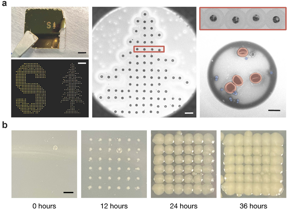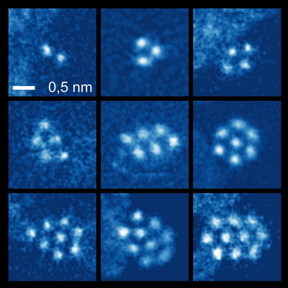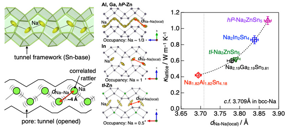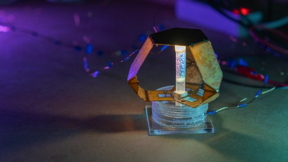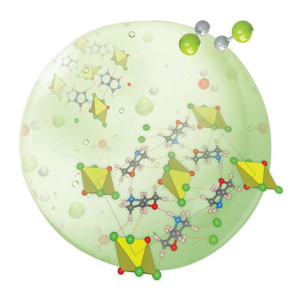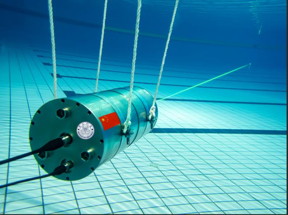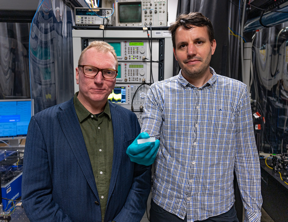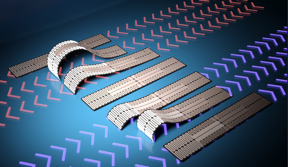Home > Press > Chip-based dispersion compensation for faster fibre internet: SUTD scientists developed a novel CMOS-compatible, slow-light-based transmission grating device for the dispersion compensation of high-speed data, significantly lowering data transmission errors and paving the way for
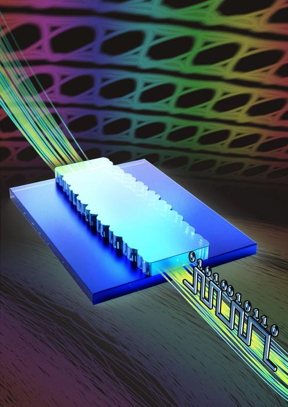 |
| Associate Professor Tan and her team developed the breakthrough dispersive device and published their findings in the paper ‘Slow-light-based dispersion compensation of high-speed data on a silicon nitride chip’ in Advanced Photonics Research. Their paper was selected as the June issue inside cover of the journal. CREDIT SUTD |
Abstract:
Fibre optics is now the fastest and most reliable technology to deliver internet connection. Data is transmitted through fast-travelling pulses of light that bounce off the walls of the fibre cables to allow the signal to travel further with less attenuation. However, fibre data transmission is subject to dispersion, or signal degradation from impairments in the optical fibre. This causes different wavelengths of light to travel at various speeds, spreading the signal over time and causing errors.
Chip-based dispersion compensation for faster fibre internet: SUTD scientists developed a novel CMOS-compatible, slow-light-based transmission grating device for the dispersion compensation of high-speed data, significantly lowering data transmission errors and paving the way for
Singapore | Posted on June 30th, 2023
Dispersion compensation methods can overcome this problem, with on-chip devices being especially promising as they can be put into the transceivers to increase signal reach. While on-chip dispersive devices exist, none have demonstrated dispersion compensation of high-speed data. This is the gap that researchers from the Photonics Devices and Systems Group of the Singapore University of Technology and Design (SUTD), led by Associate Professor Dawn Tan, aimed to close.
Many integrated dispersive devices are possible, but gratings seemed the most promising due to their advantageous transmission and phase properties. With gratings as their specialty, Associate Professor Tan and her team developed a breakthrough dispersive device and published their findings in the paper ‘Slow-light-based dispersion compensation of high-speed data on a silicon nitride chip’ in Advanced Photonics Research. Their paper was even selected as the June issue inside cover of the journal, signifying the promising application of the novel device.
“Our group has been working with gratings for various applications throughout the years. For example, we’ve used gratings for slow light, optical amplifiers, and solitons. Our experience in grating design and development as well as our interactions with the industry have helped us to address the current pain point in high-speed data movement,” said Associate Professor Tan.
Her research group designed and demonstrated a low loss, complementary metal-oxide semiconductor (CMOS)-compatible silicon nitride grating device for the dispersion compensation of high-speed data. The criteria they set out to fulfil in creating this device are three-fold: high dispersion, low data loss, and the small form factor required for on-chip integration.
Existing dispersive devices that generate high dispersion show high data loss, while devices that allow low data loss do not generate high dispersion. A device that could do both and be integrated onto a chip would be a significant advancement in data transmission technology. To address this, the researchers designed two grating devices—one with a single grating pitch of 434 nanometres (single grating device; SGD) and another with two overlaid gratings with dissimilar pitches of 434 and 440 nanometres (overlaid grating device; OGD).
The transmission spectra of both SGD and OGD are similar. A stopband at both spectra induces forward and backward propagating modes in the gratings. These modes interact and give rise to a slow-light effect, which is the reduction in the velocity of the light pulses. Slow-light effect varies rapidly with wavelength, generating areas of high dispersion. Due to the unique dispersive mechanism of the devices, data loss is minimally affected even with high dispersion.
“In this study, both SGD and OGD allowed the dispersion compensation of long fibre reaches (up to 20 kilometres) with minimal loss. Moreover, both devices achieved improved error correction performance, reducing bit error rates by nine orders of magnitude from 5×10-1 to 1×10-10,” described Kenny Ong, PhD candidate at SUTD and the first author of the paper.
The OGD can also provide a range of dispersion values useful for dynamic dispersion compensation. “Using thermo-optic tuning, one could control the OGD dynamically to compensate for dispersion of various magnitudes, or dispersion associated with various fibre lengths,” Associate Professor Tan added.
This can simplify dispersion compensation systems used in different optical communication systems and help reduce temperature or fibre stress effects on data transmission. Since the dispersion profile of the OGD can be altered with small changes in wavelength, a smaller degree of thermo-optic tuning (that is, less power) is needed to bring about the required dispersion.
Integrating SGD and OGD into commercial transceivers, either within the transmitter or the receiver chip, was shown to be possible and advantageous. These devices are compatible with CMOS manufacturing and can be integrated within transceiver chips, enabling a wider reach of the fibre and also higher data rates to be used.
“The devices are most suited for transceivers that serve data centre communications. This industry is cost and power-sensitive, and do not typically use digital signal processing for data correction,” explained Associate Professor Tan.
At present, she hopes to collaborate with industry partners to commercialise the novel grating devices. She mentions that the ideal partnership would be with a company that manufactures transceivers, so the dispersion compensation devices can be integrated within their chips to augment their performance.
For future research, she plans to augment the dispersion performance of the devices and investigate the data rates and fibre reaches that they can support. Her team is also looking into fine-tuning the mechanisms, creating new designs for the gratings, and using gratings in other applications.
####
For more information, please click here
Contacts:
Jessica Sasayiah
Singapore University of Technology and Design
Office: 656-499-4823
Copyright © Singapore University of Technology and Design
If you have a comment, please Contact us.
Issuers of news releases, not 7th Wave, Inc. or Nanotechnology Now, are solely responsible for the accuracy of the content.
| Related Links |
| Related News Press |
News and information
![]() Electron collider on a chip June 30th, 2023
Electron collider on a chip June 30th, 2023
![]() Discovering features of band topology in amorphous thin films June 30th, 2023
Discovering features of band topology in amorphous thin films June 30th, 2023
![]() New single-photon Raman lidar can monitor for underwater oil leaks: System could be used aboard underwater vehicles for many applications June 30th, 2023
New single-photon Raman lidar can monitor for underwater oil leaks: System could be used aboard underwater vehicles for many applications June 30th, 2023
Wireless/telecommunications/RF/Antennas/Microwaves
![]() Researchers demonstrate co-propagation of quantum and classical signals: Study shows that quantum encryption can be implemented in existing fiber networks January 20th, 2023
Researchers demonstrate co-propagation of quantum and classical signals: Study shows that quantum encryption can be implemented in existing fiber networks January 20th, 2023
![]() HKUST researchers develop a novel integration scheme for efficient coupling between III-V and silicon November 18th, 2022
HKUST researchers develop a novel integration scheme for efficient coupling between III-V and silicon November 18th, 2022
![]() Synthesis of air-stable room-temperature van der Waals magnetic thin flakes September 30th, 2022
Synthesis of air-stable room-temperature van der Waals magnetic thin flakes September 30th, 2022
![]() Quantum network nodes with warm atoms June 24th, 2022
Quantum network nodes with warm atoms June 24th, 2022
Discoveries
![]() CityU awarded invention: Soft, ultrathin photonic material cools down wearable electronic devices June 30th, 2023
CityU awarded invention: Soft, ultrathin photonic material cools down wearable electronic devices June 30th, 2023
Announcements
![]() New single-photon Raman lidar can monitor for underwater oil leaks: System could be used aboard underwater vehicles for many applications June 30th, 2023
New single-photon Raman lidar can monitor for underwater oil leaks: System could be used aboard underwater vehicles for many applications June 30th, 2023
![]() CityU awarded invention: Soft, ultrathin photonic material cools down wearable electronic devices June 30th, 2023
CityU awarded invention: Soft, ultrathin photonic material cools down wearable electronic devices June 30th, 2023
Interviews/Book Reviews/Essays/Reports/Podcasts/Journals/White papers/Posters
![]() New single-photon Raman lidar can monitor for underwater oil leaks: System could be used aboard underwater vehicles for many applications June 30th, 2023
New single-photon Raman lidar can monitor for underwater oil leaks: System could be used aboard underwater vehicles for many applications June 30th, 2023
![]() CityU awarded invention: Soft, ultrathin photonic material cools down wearable electronic devices June 30th, 2023
CityU awarded invention: Soft, ultrathin photonic material cools down wearable electronic devices June 30th, 2023
Photonics/Optics/Lasers
![]() New single-photon Raman lidar can monitor for underwater oil leaks: System could be used aboard underwater vehicles for many applications June 30th, 2023
New single-photon Raman lidar can monitor for underwater oil leaks: System could be used aboard underwater vehicles for many applications June 30th, 2023
![]() The picture of health: Virginia Tech researchers enhance bioimaging and sensing with quantum photonics June 30th, 2023
The picture of health: Virginia Tech researchers enhance bioimaging and sensing with quantum photonics June 30th, 2023
![]() USTC enhances fluorescence brightness of single silicon carbide spin color centers June 9th, 2023
USTC enhances fluorescence brightness of single silicon carbide spin color centers June 9th, 2023
- SEO Powered Content & PR Distribution. Get Amplified Today.
- PlatoData.Network Vertical Generative Ai. Empower Yourself. Access Here.
- PlatoAiStream. Web3 Intelligence. Knowledge Amplified. Access Here.
- PlatoESG. Automotive / EVs, Carbon, CleanTech, Energy, Environment, Solar, Waste Management. Access Here.
- BlockOffsets. Modernizing Environmental Offset Ownership. Access Here.
- Source: http://www.nanotech-now.com/news.cgi?story_id=57362
- :has
- :is
- :not
- $UP
- 10
- 20
- 27
- 30th
- 7th
- 9th
- a
- About
- accuracy
- achieved
- added
- address
- advanced
- advancement
- advantageous
- aimed
- allow
- allowed
- also
- altered
- and
- Another
- Application
- applications
- ARE
- areas
- AS
- Associate
- associated
- At
- author
- awarded
- BAND
- BE
- been
- being
- between
- Bit
- both
- Bounce
- breakthrough
- bring
- but
- by
- cables
- CAN
- candidate
- causes
- causing
- Center
- centre
- CGI
- Changes
- characteristic
- chip
- Chips
- click
- Close
- collaborate
- color
- COM
- comment
- commercial
- Communication
- Communications
- company
- compatible
- Compensation
- complementary
- complex
- computing
- Confirm
- connection
- content
- control
- Cost
- could
- cover
- Creating
- credit
- criteria
- crucial
- Current
- data
- data centre
- data loss
- Degree
- deliver
- demonstrate
- demonstrated
- described
- Design
- designed
- designs
- develop
- developed
- Development
- device
- Devices
- different
- digital
- dimensions
- Dispersion
- do
- down
- due
- dynamic
- dynamically
- Edge
- effect
- effects
- efficient
- either
- Electronic
- enabling
- encryption
- end
- enhance
- Enhances
- error
- Errors
- especially
- Ether (ETH)
- Even
- Examines
- example
- exist
- existing
- experience
- Explain
- explained
- explore
- factor
- faster
- fastest
- Features
- findings
- First
- For
- form
- Forward
- from
- further
- future
- gap
- generate
- generating
- gif
- Give
- Group
- Have
- Health
- help
- helped
- her
- High
- higher
- hopes
- However
- http
- HTTPS
- ideal
- if
- implemented
- improved
- in
- In other
- Inc.
- Increase
- industry
- industry partners
- information
- inside
- insight
- integrated
- integration
- interact
- interacting
- interaction
- interactions
- Internet
- internet connection
- into
- Invention
- investigate
- issue
- January
- journal
- jpg
- june
- Leaks
- Led
- less
- lidar
- light
- links
- Long
- looking
- loss
- Low
- lowering
- manufacturing
- many
- material
- mechanism
- mechanisms
- mentions
- methods
- minimal
- modes
- Monitor
- more
- Moreover
- most
- motion
- movement
- nanotechnology
- Natural
- needed
- net
- network
- New
- news
- nodes
- novel
- November
- now
- NSF
- of
- off
- Oil
- on
- ONE
- optics
- or
- orders
- Other
- our
- out
- over
- Overcome
- Pain
- Paper
- partners
- Partnership
- Paving
- performance
- phase
- PHP
- picture
- Pitch
- pitches
- plans
- plato
- Plato Data Intelligence
- PlatoData
- please
- Point
- possible
- Post
- posted
- potential
- power
- present
- press
- Press Release
- Problem
- processing
- Professor
- Profile
- promising
- propagating
- properties
- provide
- provides
- published
- put
- Quantum
- quantum computing
- range
- rapidly
- Rates
- reach
- Reaches
- receives
- reduce
- reducing
- reduction
- release
- Releases
- reliable
- required
- research
- research group
- researcher
- researchers
- responsible
- return
- Rise
- Said
- Save
- scalable
- scheme
- scientists
- Search
- seemed
- selected
- semiconductor
- September
- serve
- set
- SGD
- Share
- she
- show
- shown
- Shows
- Signal
- signals
- significant
- significantly
- Silicon
- silicon carbide
- similar
- simplify
- since
- Singapore
- single
- slow
- small
- smaller
- So
- Soft
- solely
- solid
- special
- Specialty
- speeds
- Spin
- Spreading
- start
- stress
- Study
- subject
- submit
- support
- synthetic
- system
- Systems
- team
- tech
- Technology
- that
- The
- The Future
- their
- These
- they
- this
- Through
- throughout
- time
- to
- toward
- transformative
- travel
- two
- typically
- understanding
- underwater
- unique
- university
- us
- use
- used
- using
- Values
- various
- Ve
- Vehicles
- VeloCity
- virginia
- warm
- was
- Wave
- wavelengths
- Way..
- we
- wearable
- WELL
- which
- while
- wider
- with
- within
- working
- would
- Yahoo
- years
- you
- zephyrnet










